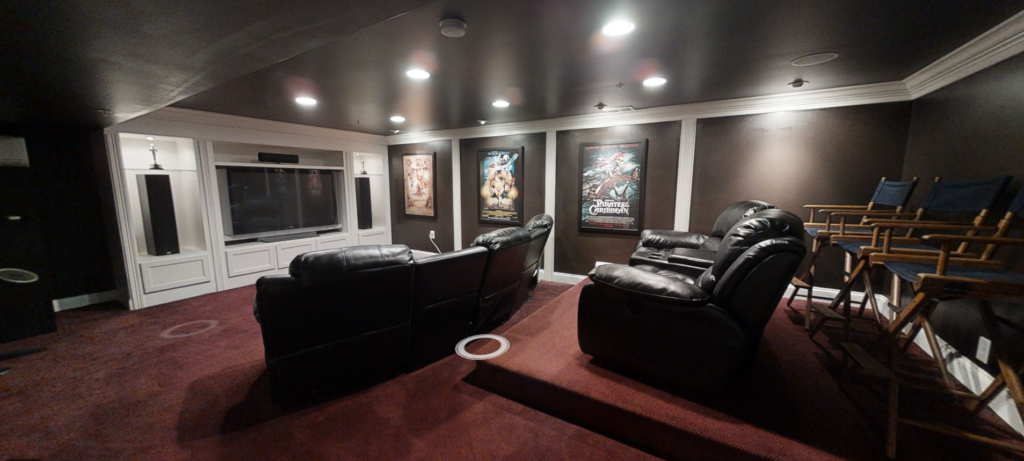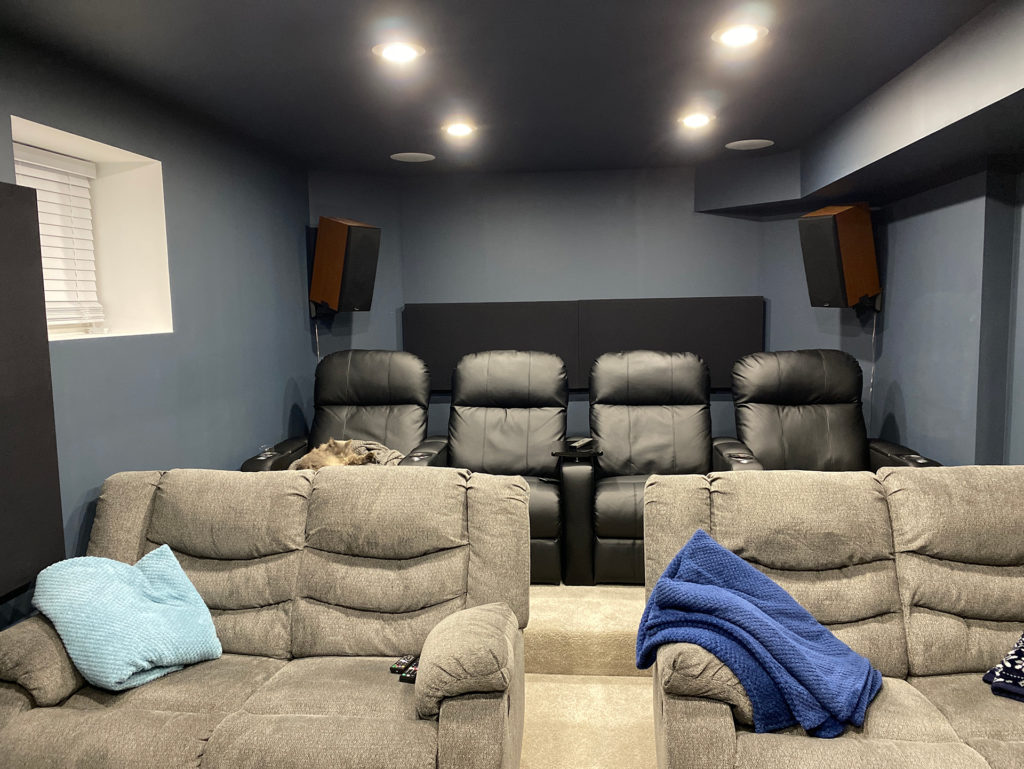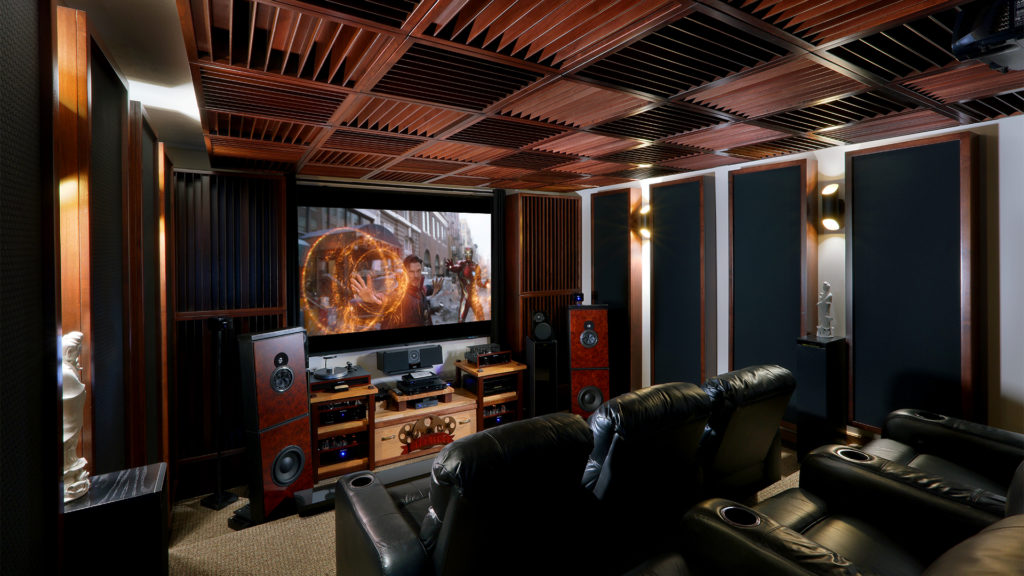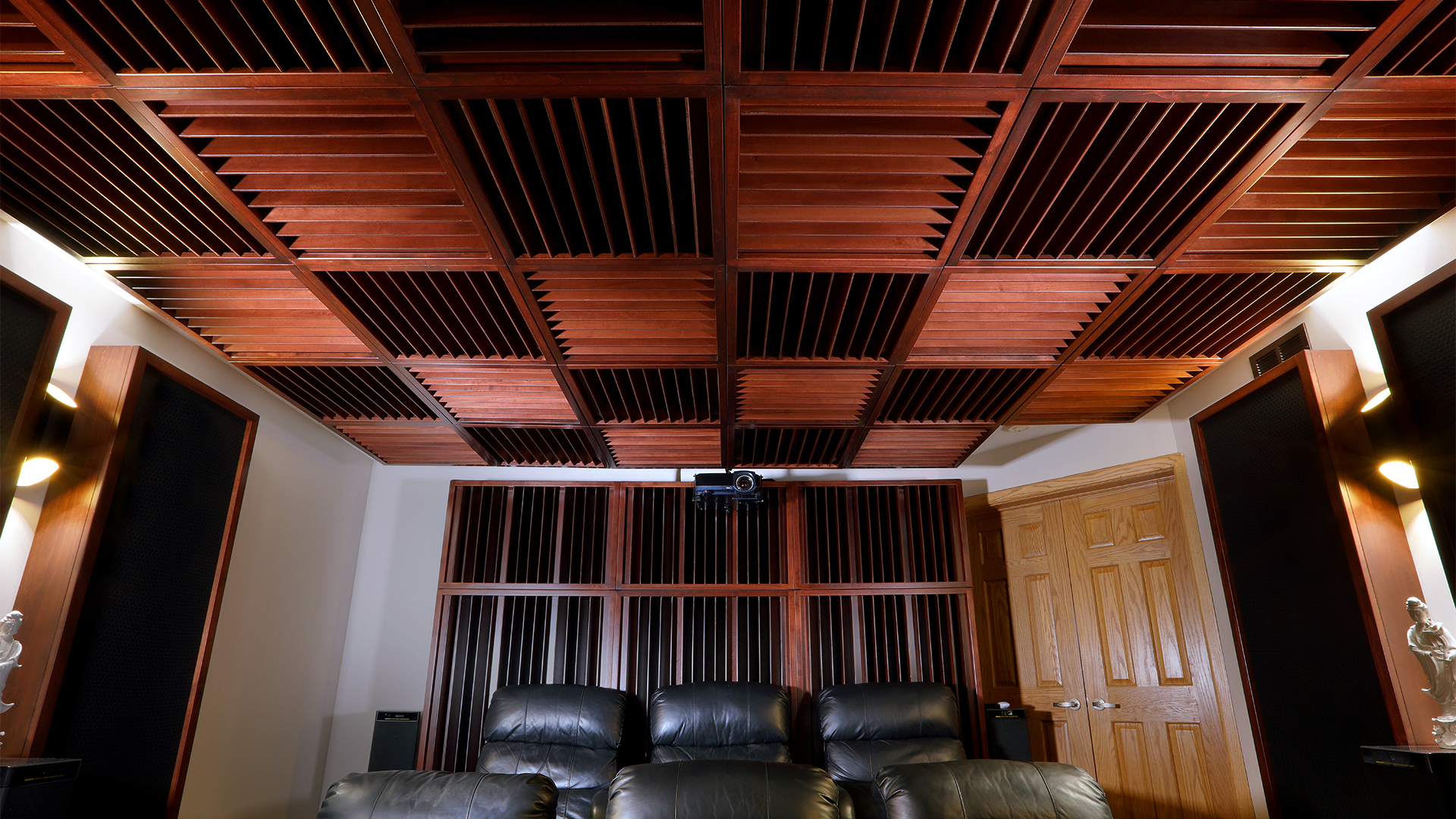In our home theater seating, we need to have a design that will allow for everyone who wishes to watch the space to comfortably view the screen and just as importantly have the ability to hear everything. The home theater seating area must have the correct distance from the screen on the front wall to maximize the seating viewing of the screen aspect ratio. The home theater seating must be positioned to view everything without any twisting or turning of the head. Objects on the screen that move from left to right must be able to follow the audio and video together. The audio and video must synch together with no delay in the audio following the objects on the screen. Home theater seating must also allow for everyone to see everything.

To make sure that everyone can see what is going on the screen, we use rows of seats. The width of the seating area must correspond to the aspect ratio of the screen. A lot of clients we see choose a screen that is too large for the room. This can have many negative issues. First, if you sit too close to the screen, you will lose resolution. Sitting too far away you will also lose resolution. It is a distance that must be measured and calculated. The number of seats can also be an issue. Most clients we see choose too many seats for their theaters. They install many seats that they will never use. Don’t get caught in this situation. Every additional seat requires more planning and larger room distances. It is difficult to match the audio to the video when you have more seats than you actually use. If you need more seating from time to time, add the required amount temporarily and then remove the seats when not using them.
Home Theater Design: https://www.acousticfields.com/home-theater-acoustics-service/
We have found that most home theater seating works well in today’s small rooms if you limit the seating to 3-4 seats. We have found a triangle type arrangement for home theater seating. You have one seat at the north apex of the triangle for single person viewing. You then have two seats behind the single seat for two people viewing. If you need additional seating from time to time, simply bring in some extra chairs to accommodate the need. With three seats, you can easily design for both audio and video viewing. To make sure that the second row of seating can be seen over the first seat, we elevate the second row of seating so that the second row can see over the first chair.

When you elevate home theater seating rows, you have an opportunity to install low-frequency absorption in the riser. Low-frequency management in home theaters is a required treatment type. The placement of low-frequency management under the seats is the best place to place low-frequency treatment. If you place treatment under the seats, you will have the most impact on the audio presentation. Locating low-frequency absorption under the seats will improve attack and decay rates for car crashes and explosions. When an explosion occurs, it must begin and end within a certain time frame. If your room is not treated correctly with proper rates and levels of absorption, the explosion sonics will hang around too long in the room. This hang time will cover dialog and prevent the words from being heard.

In selecting our home theater seating, we must choose a chair that supports the listener but does not interfere with the sound transmission within the room and to the listener’s ears. We see a lot of high backed chairs. These chairs block the sound transmission of the side and rear wall channels. This can produce phase issues. If the front channel sound energy is not synchronized with the side and rear channels. This will produce a delay in the energy from the sidewalls and rear walls and the front wall where the front channels are located. High backed chairs can also limit the ability of the acoustic treatment to produce its designed impact. With high backed chairs, your room will sound smaller when our sonic goal is to create a larger sounding room.
About Us at Acoustic Fields: https://www.acousticfields.com/about/








The discussion on ductwork noise transmission from Acoustic Fields highlights crucial aspects of HVAC system acoustics. The movement of air…
Great build plans. thank you Denis
You must use absorption. Never place a chair against a wall.
A friend and I built several diffusors using these plans and they turned out absolutely beautiful. Very good instructions and…